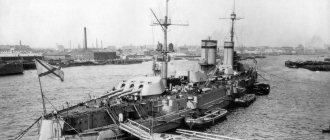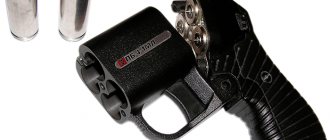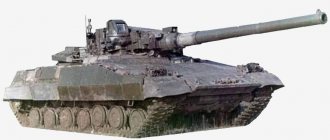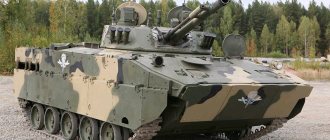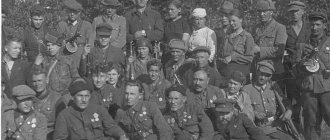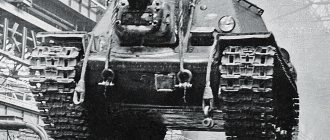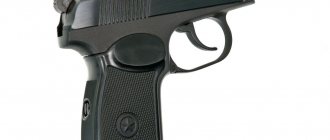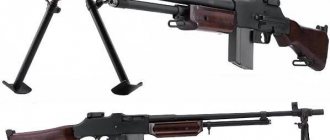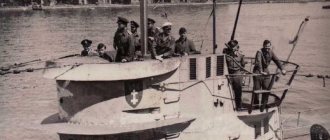Significant changes
On August 7, 2022, it became known about the decision of the South African military department to rename 52 regiments and battalions in reserve.
The official explanation for this action is that "the current state of the military tradition of the reserve units reflects only the military history of the South African Self-Defense Forces and its predecessor, the Allied Defense Forces, while the African armed forces and liberation armies that participated in the freedom struggle are properly reflected in the military We didn’t get the story.” That is, the restoration of historical justice in the spirit of the ongoing construction of a multicultural and racially harmonious society. The army press release emphasizes that the decision was made after much historical research and numerous meetings with the participation of representatives from all walks of life. The renaming process itself should take at least three years, after which the old regalia will take its place in museums and storage facilities.
(Photo source)
The changes are significant. So, in the land units, the Cape Town Highlanders regiment will become the Gonnema regiment (named after the Hottentot leader who bravely resisted the troops of the East India Company that colonized southern Africa); Transvaal Scottish Regiment - a regiment named after Solomon Mahlangu (an African National Congress militant who shot two civilians while trying to arrest two civilians in 1977 and was subsequently hanged); The South African Irish Regiment is the regiment of Andrew Mlangeni, an anti-apartheid fighter (who, by the way, is still alive today). In addition, artillery, armored, engineer regiments and battalions, as well as communications and logistics units - 52 in total - will be renamed in the same spirit.
As V.I. Lenin used to say in such cases: “Formally it’s true, in essence it’s a mockery.”
At least, veterans of the South African armed forces (of which there are a huge number in the republic) perceived this decision that way. South African groups on Facebook (in addition to large veteran communities, there are various associations of veterans of specific regiments) have literally boiled over. Opinions range from "the saddest day in military history" to phrases that are barely acceptable for censorship reasons.
Organization
The President of State has been the Commander-in-Chief of the SADF since:
- Chief of Defense Forces - overall senior commander
- Chief of the Army
- Chief of the Air Force
- Chief of the Navy
- Head of Medical Service (Chief Surgeon)
The headquarters units of the Chief of Defense Staff included:
- Staff
- Intelligence
- Operations
- Logistics
- Finance
Other helpdesk commands:
- Inspector General of the SADF
- General Chaplain of the SADF
“They are taking away our history!”
There are several reasons for this. History - and especially military history - is an area where a fierce s... fierce dispute is born instantly and on any issue. And every person, and especially a social group, considers himself unconditionally right, insisting on the truth of his point of view.
The military history of South Africa as a first approximation is, firstly, the history of the conquest of a wild land by whites (Dutch and British), secondly, the participation of South Africans in world wars, and thirdly, the Angolan War (1966 - 1989) and the fight against terrorists (until 1990, the liberation movements in South Africa were called that only). And the stubborn historical fact is that 90 percent of this was done by whites. Yes, in 1974 the first black units appeared in the army, and by the end of the Angolan campaign many black Africans served in the South African Armed Forces (with weapons in their hands) - but the Boer and English-speaking population of the country bore the entire military burden of the 20th century.
South African Army, 1984
The first reaction was predictable: “They are taking away our history!”
No special explanation required. The same South African Irish Regiment took part in the battles against Rommel, and also distinguished itself in Angola, and now it will be named after Andrew Mlangeni - certainly a worthy man (under apartheid he served 27 years in prison for armed struggle, later became a deputy) - but what does the unit’s glorious military history have to do with it? The same goes for Nelson Mandela, the first president of the new South Africa - the Cape Town Light Artillery Regiment was renamed in his honor.
South African troops in Angola in 1984
Veterans are perplexed: Mandela is revered almost universally in South Africa, but for all his merits, what did he have to do with guns?
By the way, the veterans asked this question directly to General Roy Andersen, the current commander of the reserve units of the South African Armed Forces - they say, from what holiday, Mr. General, at least explain the reasons? The general’s answer was laconic: “The list is balanced.”
Formally, the general is right. Although many white names have been removed (the regiment of De Wet, the Boer general, became the regiment of Albert Luthuli, the first African winner of the Nobel Peace Prize; the names of Piet Retief, the leader of the Great Boer Migration, and Presidents Stein and Kruger have disappeared), but some things are not simple remained, and even changed - Botha's regiment became General Botha's regiment, de la Rey's regiment became General de la Rey's regiment, the Vestelike Province regiment became General Jan Smuts's regiment, and the Free State artillery regiment became General Dan Pienaar's regiment.
South African Army, 1987
Veterans considered this a sophisticated mockery.
South African military historians were also puzzled by the new name of the Transvaal Horse Artillery regiment - it is now called the Sandfontein Artillery. During the First World War in Africa, in the Battle of Sandfontein (South-West Africa) on September 26, 1914, this particular regiment suffered a crushing defeat from German colonial troops. That is, a defeat: the Germans lost 60 people killed and wounded, the South Africans - more than a thousand, not counting prisoners. To the question “is it appropriate to name a regiment after the place where the regiment was actually destroyed?” The South African Ministry of Defense did not respond.
Another reason that infuriated former soldiers and officers was ethical. The history of South Africa in the second half of the twentieth century is still quite painful for the South Africans themselves: there is apartheid, which brought racial contradictions to the limit, and the war in Angola, and the struggle of the black population with the regime (often consisting of terrorist acts) and cruel (at times outright bloody) ) suppression of this struggle by the army and police - and so on and so forth.
South African troops in Angola, 1987
In terms of the degree of love and mutual respect, South Africa is very reminiscent of the Balkans - the Serbs and Croats, not to mention the Bosnians and Albanians, also have their own views on both the Second World War and the 1990s. In the end, there are no particular objections to the renaming of the Durban Infantry into the regiment of King Chaka - after all, Chaka was a military leader, and even the most inveterate racists recognize him as a warrior. But the fact that the 32nd logistics battalion will now become Sabelo Fama’s battalion shocked the veterans.
South African Army, 2016
Fama once commanded the Azanian People's Liberation Army, a militant anti-government group that became famous mainly for terror against civilians in South Africa. Among the acts she committed: the attack on the King William's golf club (four dead), the attack on the Church of St. James in 1993 (11 dead, including several Russian sailors who came to the service - somehow it is not customary to particularly mention this) ; the shooting of three random Iranians in Mandtsan (simply because they were white) and 29 more similar acts (in total - 24 dead and 122 seriously wounded in just two years).
What does it feel like to find out that the battalion, although not the most glorious, will bear the name of the organizer of the terrorist attacks?
A similar situation happened not so long ago in South Africa’s neighboring country, the Republic of Zimbabwe. In November 2022, by order of the Minister of Defense, military bases in the country were renamed in honor of the heroes of the liberation war of 1972–1980. “White” place names disappeared, and “black” ones appeared instead.
Rhodesian Army, 1978
Curiously, this did not cause much outrage in Zimbabwe. Firstly, the white community in the country is extremely small (60 thousand people out of 16 million population). Secondly, the racial issue in Zimbabwe, surprisingly, is not as acute as in its southern neighbors - whites and blacks coexist extremely peacefully. As for the past war, which official propaganda calls “Chimurenga”, “Liberation War”, and the rest of the world calls the Rhodesian War, there is an unspoken taboo on its wide public discussion.
Rhodesian paratroopers in 1976
In this regard, the Zimbabwean authorities really managed to reconcile the nation. Everyone knows perfectly well that any white Zimbabwean born before 1963 at least served in the old army, not to mention more - but no one points this out: white veterans in their narrow circle celebrate their memorable dates, black ones pay no attention to this convert. Perhaps this is why the renaming of military garrisons in the spirit of Africanization was perceived phlegmatically by former white soldiers.
White veterans of the Rhodesian army mark their anniversary (photo: Lucy Broderick)
As one of the saboteurs, who once destroyed partisan camps, explained in a private conversation: “I served at the Cranborne base - which no one can take away from me. My service ended in 1980. I don’t care what the current government calls this base.”
Recommendations
- “Military service becomes compulsory for white South African men. | South African History Online". sahistory.org.za. June 9, 1967. Retrieved February 26, 2013.
- “South Africa ends white conscription. | New York Times." nytimes.com
. August 25, 1993. Retrieved October 22, 2014. - ^ a b c d e f gram h i j k l m p o p q r s t you
Duignan, Peter.
Politics and government in African states 1960–1985.
. pp. 283–408. - https://www.flemishpeaceinstitute.eu/get_pdf.php?ID=263&lang=EN[permanent dead link
] - ^ a b
Polakov-Suransky, Sasha.
The Unspoken Alliance: Israel's Secret Relationship with Apartheid South Africa
. pp. 1–336. - Chris McGreal (10 March 2006). “Brothers in Arms - Israel's secret agreement with Pretoria | World News". The keeper
. London. Retrieved February 26, 2013. - Kokalis, Peter. Mamba: deadly snake or dangerous fiasco?
. Shotgun News, 2006, volume 60, issue 15 p. 10. - "Data" (PDF). edoc.vifapol.de
. 2011. - "Trade registers". sipri.org
. - "Archival copy." Retrieved July 19, 2013.
- "Archive copy" (PDF). Archived from the original (PDF) on September 7, 2008. Retrieved September 19, 2012.CS1 maint: archived copy as title (link)
- Thompson, Alex. US Foreign Policy Regarding Apartheid South Africa, 1948–1994: Conflicts of Interest
. pp. 4–260. - ^ a b
"Integration Final Report: SANDF Briefing | Parliamentary Monitoring Group | Monitoring the South African Parliament." pmg.org.za. November 9, 2004. Retrieved February 26, 2013. - ^ a b
"SOUTH AFRICA: SA Women: Hard Times in the Army - News Library - News and Events." PeaceWomen. November 24, 2010. Archived from the original on October 4, 2013. Retrieved February 26, 2013. - ^ a b
"South African Military Profile 2012". Indexmundi.com. July 19, 2012. Retrieved February 26, 2013. - SA Medical Services. sadf.info
. Retrieved October 22, 2014. - "Archive copy" (PDF). Archived from the original (PDF) on June 9, 2010. Retrieved September 20, 2012.CS1 maint: archived copy as title (link)
- Published: August 25, 1993 (August 25, 1993). "South Africa Stops White Conscription - New York Times." NYtimes.com. Retrieved February 26, 2013.
- "Delmas Treason Trial 1985–1989: UDF Memorandum on Militarization" (pdfarchiveurl =https://www.historicalpapers.wits.ac.za/inventories/inv_pdfo/AK2117/AK2117-J4-24-AAZ17-001- jpeg.pdf). historypapers.wits.ac.za/
. - "Archival copy." Archived from the original on December 24, 2013. Retrieved February 26, 2013.CS1 maint: archived copy as title (link)
- Venter, Kobus. "Terrible." flecha.co.uk
. Retrieved October 22, 2014. - Rooster, Jacklyn. “War and Society: Militarization of the SA. Summary of Jacklin Cock's book." historypapers.wits.ac.za
. University of the Witwatersrand. Retrieved October 22, 2014. - “The troops occupy the villages.” SAHA. Retrieved February 26, 2013.
- "South Africa: Overcoming Apartheid". Overcomingapartheid.msu.edu. Retrieved February 26, 2013.
- "Africa Files - Printable Version." africafiles.org
. - ^ a b c
Fryxell, Cole.
To be born a nation
. clause 13. - “INTERVIEW WITH PEAK BOT (05.20.97).” gwu.edu. Retrieved February 26, 2013.
- ^ a b
Green, Sparks.
Namibia: a nation after independence
. pp. 1–134. - McNab, Chris (2002). Military uniform of the 20th century
(2nd ed.). Kent: Grange Books. p. 204. ISBN 1-84013-476-3. - "Africa: South Africa". get-publishing.com
. Archived from the original on September 17, 2012. - "South Africa". Homepages.force9.net. Retrieved February 26, 2013.
- "World War II: Nine | History of South Africa on the Internet. sahistory.org.za. June 3, 1940. Archived from the original on June 25, 2011. Retrieved February 26, 2013.
- ^ a b c
Kaplan, Irving.
South Africa: A Country Study
. pp. 1–846. - https://www.mpil.de/shared/data/pdf/pdfmpunyb/wood_2.pdf[permanent dead link
] - Thomas McGee, Charles S.; N/A, N/A, ed. (1989). The Conspiracy Against South Africa
(2nd ed.). Pretoria: Varama Publishing. ISBN 0-620-14537-4. - "Operation Savannah 1975 - 76 UNDER DEVELOPMENT - South African Bushwar/Border War Site." Sites.google.com. Retrieved February 26, 2013.
- "Archive copy" (PDF). Archived from the original (PDF) on December 2, 2013. Retrieved August 14, 2014.CS1 maint: archived copy as title (link)
- "Conflict Review - TRC - O'Malley Archives." Nelsonmandela.org. Retrieved February 26, 2013.
- "Rhodesian War of Independence". History today
. Retrieved February 26, 2013. - "South Africa". Themukiwa.com. Retrieved February 26, 2013.
- "Rex". FromTheOld. December 18, 2012. Retrieved February 26, 2013.
- "Reproduction of Cuito Cuanavale". History today
. Retrieved February 26, 2013. - "Educational Books" (PDF). apartheidmuseum.org
. - "New page 1". flecha.co.uk
. - "Military Chronicle of South West Africa". Rhodesia.nl. Retrieved February 26, 2013.
- Bennett, David S. (March 1990). "Zimbabwe Army: A Role Model for Namibia" (PDF). Carlisle Barracks, PA: US Army War College. Retrieved October 19, 2011. Journal Citation Requires | log = (help)CS1 maint: ref = harv (communication)
- "Exotic South Africa _World Cup 2010 (South Africa) Events Special Subject_7M Sports." 2010.7msport.com. January 13, 2010. Retrieved February 26, 2013.
- 'Full onslaught'." New story. Archived from the original on June 6, 2011. Retrieved February 26, 2013.
- "India-South Africa Defense Cooperation: Potential and Prospects." idsa-india.org
. - "All-out onslaught in pursuit of settlement in South West Africa." New story. Archived from the original on April 24, 2013. Retrieved February 26, 2013.
- "One terrorist... | News | National | Mail & Guardian". mg.co.za. March 15, 2007. Retrieved February 26, 2013.
- “SADF conducts raids on ANC targets in neighboring countries | History of South Africa on the Internet. sahistory.org.za. May 19, 1986. Retrieved February 26, 2013.
- "gaberone". Rhodesia.nl. Retrieved February 26, 2013.
- "Civil-military relations in the development country of Botswana." Africa.ufl.edu. Archived from the original on October 21, 2012. Retrieved February 26, 2013.
- “South African troops (SADF) raid Maseru to kill suspected African National Congress members | History of South Africa on the Internet. sahistory.org.za. December 9, 1982. Archived from the original on December 15, 2012. Retrieved February 26, 2013.
- "Journal" (PDF). archive.lib.msu.edu
. - iPad iPhone Android TIME TV Populist The Page (June 24, 1985). "Deadly Raid in South Africa". TIME
. Retrieved February 26, 2013. - "54. Apartheid". Eightiesclub.tripod.com. Retrieved February 26, 2013.
- Lowe, Eric. The Rise, Fall and Legacy of Apartheid
. pp. 1–280. - Communist Party of South Africa. “The way forward from Soweto. Communist Party of South Africa 1977". Marxists.org. Retrieved February 26, 2013.
- Institute for Security Studies. “On Skill and Subordination - South African Defense Review, No. 4, 1992.” Iss.co.za. Archived from the original on August 25, 2012. Retrieved February 26, 2013.
- Rogerty, James Michael. State Security in South Africa: Civil-Military Relations under P.W.
Botha . pp. 1–209. - "Regimental History Prepared by James H. Mitchell." jocks.co.za. Retrieved February 26, 2013.
- "Questions and answers". Allatsea.co.za. Archived from the original on April 30, 2013. Retrieved February 26, 2013.
- "Inventory" (PDF). historypapers.wits.ac.za
. - Institute for Security Studies. "Challenges Facing the SANDF: From Integration to Affirmative Action - African Security Review Vol. 4 No. 1, 1995." Iss.co.za. Archived from the original on October 14, 2008. Retrieved November 27, 2013.CS1 maint: invalid URL (link)
- "From SADF to SANDF: Defending South Africa for a Better Life for All? — Noel Stott." csvr.org.za. Archived March 7, 2013. Retrieved November 27, 2013.CS1 maint: invalid URL (link)
Inevitability
This process is probably inevitable: in any multinational country with a history of civil war - open or “cold” - the issue of interpreting history will always be acute. And there will always be forces advocating “correction of history,” including in names, since a name is a symbol, a key concept. In the United States, military bases and units do not seem to be renamed yet - but monuments to former Confederate soldiers are already being demolished, and the CSA battle flag itself is actually under an unspoken ban.
Who knows - maybe in 50 years the 82nd Airborne ("All-American") will be renamed Martin Luther King's division.
So the indignation of South African veterans, no matter how strong, is unlikely to change anything. Time plays against them (decline from natural causes, sadly) and demography - white emigration from the country continues, but the birth rate in this ethnic group is not growing. And besides, in any country the army does not like to deviate from a decision, and even more so if it is drawn up on paper.
The most difficult thing will probably be for military historians of the future - now, when describing the combat path of one or another part of the South African army, they will have to constantly put footnotes noting what a given regiment was called in a particular period.
